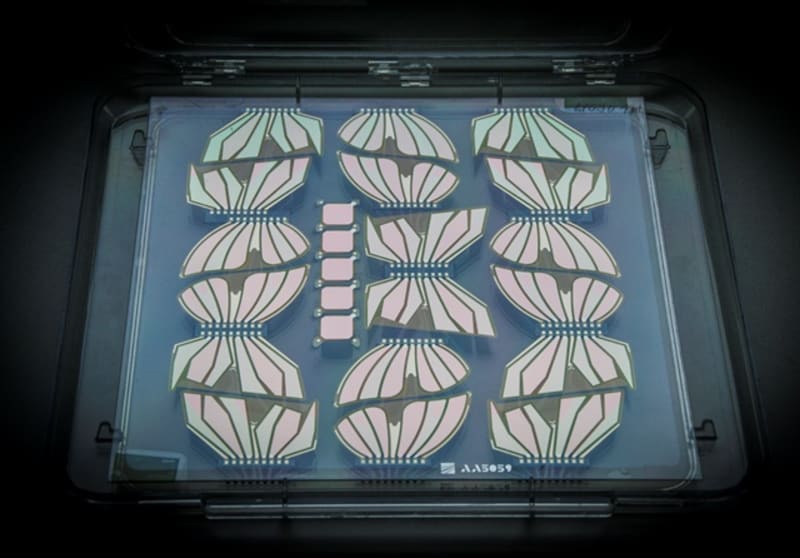Flexible OLEDs present designers with a practically unlimited tool for creating new OLED-based luminous objects. In order to inspire lighting designers or product engineers and to explain the basic design options for OLED elements for creating own unique OLED-based lighting designs, we launched Project Monarch, an OLED Design Kit. It highlights in a non-technical way the exceptional properties and features of OLEDs, such as their flexibility, transparency, the segmentation of the luminous area, and the opportunity to realize multicolored surfaces and patterns characterized by variable color, saturation, and tint – all in a single OLED design in the shape of a butterfly.
We focus on small-molecule OLED systems that are manufactured in a clean room using vacuum deposition tools, starting with bare plastic barrier film or glass substrates, to the final encapsulated OLED lighting module with integrated electrical contacts. All OLED structures are created by masking the deposition area with high-precision shadow masks.
To lend inspiration and give an overview of all the possible design options and features for realizing your individual OLED lighting design with us, we offer a unique set of options for customized OLED, all combined in the Monarch-Design Kit but also available individually:
Shapes, Segmentation, Patterns, Logos, Transparency, Colors
OLED modules can take any shape with nearly no limits. They are cut out from the plastic substrate by laser. They can also be divided into separate parts or segments, which can also take any shape. As each segment has its own electrode, they can light up and be dimmed independently. As a result, segmented OLED modules facilitate dynamic lighting effects on a single OLED module.
The active area can be populated in a way that only a mesh or grid lights up on both sides, while the interstices between the active areas remain completely transparent. This feature allows completely new designs. Another option is laser inscription of logos, text, or simply patterns into the active area.
A way to create a mixed emission color is realized by stacking two emitters on the active area. You can control those colors independently, which allows you to mix the colors by dimming them. Three emitters help to get a full RGB color spectrum.
Our OLED design process starts with a customer’s sketch or a CAD model of the final lighting sculpture. Based on this aesthetic design, our designers create a technical layout of the complete OLED module containing all necessary layers and masking steps, taking specific tool and technology design rules into account. This technical layout is the basis for the manufacturing of the shadow mask setup and all the necessary manufacturing steps.
We work closely with well-known OLED manufacturers in scaling up designs to full production. Moreover, we also demonstrate to designers the range of possibilities as well as the application requirements for a given OLED design in OLED-specific design workshops. We are also an experienced partner for integrating OLED elements into your product.
Like this entry?
-
About the Entrant
- Name:Jan Hesse
- Type of entry:teamTeam members:Jan Hesse
Dr. Christian May
Claudia Keibler-Willner
André Philipp
Falk Schütze
Dr. Michael Törker - Software used for this entry:AutoCAD
- Patent status:none








